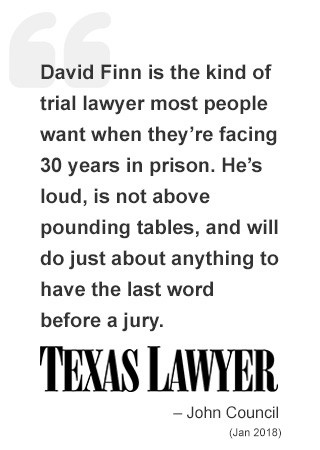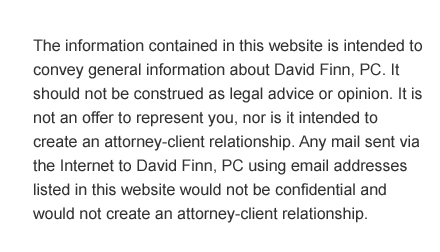


New DWI Case-Field Sobriety Tests
COURT OF APPEALS
DECISION
DATED AND FILED
January 12, 2005
Cornelia G. Clark
Clerk of Court of Appeals
This opinion is subject to further editing. If
published, the official version will appear in
the bound volume of the Official Reports.
A party may file with the Supreme Court a
petition to review an adverse decision by the
Court of Appeals. See WIS. STAT. § 808.10
and RULE 809.62.
Appeal No. 04-1871 Cir. Ct. No. 04CV000063
STATE OF WISCONSIN IN COURT OF APPEALS
DISTRICT II
CITY OF WEST BEND,
PLAINTIFF-RESPONDENT,
V.
RICHARD B. WILKENS,
DEFENDANT-APPELLANT.
APPEAL from a judgment and an order of the circuit court for
Washington County: ANNETTE K. ZIEGLER, Judge. Affirmed.
Before Brown, Nettesheim and Snyder, JJ.
¶1 BROWN, J. This case involves a question of admissibility versus
weight of the evidence. Richard B. Wilkens, convicted of operating a vehicle with
a prohibited alcohol concentration, complains that the field sobriety tests (FSTs)
the arresting officer administered were unreliable because they failed to conform
to the standardized procedures approved by the United States Department of
Transportation’s National Highway Traffic Safety Association. The trial court
determined that the reliability of the tests was for the jury to decide. We agree
that the procedures the officer employed go to the sufficiency of the evidence, not
its admissibility. We reject Wilkens’ attempt to cast this case as one involving the
use of scientific evidence, the reliability of which this court must determine before
the fact finder may consider it. FSTs are not scientific tests. They are merely
observational tools that law enforcement officers commonly use to assist them in
discerning various indicia of intoxication, the perception of which is necessarily
subjective. Moreover, it is not beyond the ken of the average person to understand
such indicia and to form an opinion about whether an indi vidual is intoxicated.
The evidence was not without probative value and therefore was admissible.
¶2 The material facts in this case are not contested. They are as
follows: Kenneth G. Onken, a city of West Bend police officer, worked the
midnight shift on November 4, 2002. While operating his radar detector on Creek
Road at approximately 2:00 a.m., he observed a motorcycle traveling fifty miles
per hour. This speed exceeded the legal speed limit by twenty miles per hour, so
Onken stopped the vehicle. When he approached the driver of the motorcycle,
Wilkens, Onken noticed several signs of intoxication: red, glassy eyes, the odor of
alcohol, Wilkens’ admission that he had consumed a few beers at a local tavern,
and slurred speech.
¶3 Because of these indicia of intoxication, Onken asked Wilkens to
perform FSTs. He administered the three tests outlined in the West Bend police
department’s FST policy: (1) the alphabet test, (2) the finger-to-nose test, and (3)
the heel-to-toe walk, in that order. Wilkens failed all three.
¶4 Based on Wilkens’ performance on the FSTs, Onken requested a
preliminary breath test. The sample indicated a blood alcohol concentration of .13
percent. Onken arrested Wilkens for operating a motor vehicle while under the
influence of an intoxicant and transported him to St. Joseph’s Hospital for a blood
draw. The results of this test revealed a blood alcohol concentration of .19
percent.
¶5 Two citations resulted from this encounter, each for a separate
violation of a municipal ordinance that adopts WIS. STAT. § 346.63 (2003-04),1
“Operating under influence of intoxicant or other drug.” One violation was for
operating his vehicle while under the influence of an intoxicant to the extent that
he was incapable of safe driving. See § 346.63(1)(a). The other cited him for
operating with a PAC. See § 346.63(1)(b).
¶6 Proceedings for this case began in the Mid-Moraine Municipal
Court. Wilkens moved to suppress from use at trial all of the following evidence:
(1) testimony by Onken relating to his administration of the FSTs and his
interpretation of Wilkens’ performance; (2) the PBT results; (3) all of Wilkens’
postarrest statements and Onken’s observations of Wilkens; and (4) the blood
draw results. Wilkens argued as follows: the court could not consider Onken’s
administration of the three FSTs or Wilkens’ performance of them because they
were not scientifically reliable. The three-test battery approved by NHTSA-the
horizontal gaze nystagmus (HGN), walk and turn (WAT), and one-leg stand
(OLS)-“is the only scientifically validated and reliable method for discriminating
1 All references to the Wisconsin Statutes are to the 2003-04 version unless indicated otherwise.
between impaired and unimpaired drivers.”2 NHTSA specifically rejected the use
of the finger-to-nose test and tests similar to the alphabet test as unreliable.
Moreover, Onken’s administration of the heel-to-toe test did not follow the
NHTSA protocol for the administration of WAT, which requires standardized
administration and grading of various clues in order to reliably distinguish passing
and failed performance. By contrast, Onken relied upon his own subjective
assessment of Wilkens’ performance.
¶7 Wilkens’ argument continued: without the FSTs, Onken had no
probable cause to request a PBT. Without the FST and PBT, Onken also had no
probable cause for the arrest. Onken’s pre-FST observations did not rise to the
requisite level of suspicion to satisfy the probable cause standard for either the
PBT or the arrest. Thus, the court should also suppress the fruits of both.
¶8 The record contains no ruling on the suppression motion, but it is
clear that the case proceeded to trial on December 18, 2003. The trial resulted in
findings of guilt on both charges, and the court entered final judgment on January
9, 2004. Wilkens appealed to the Washington County Circuit Court.
¶9 Wilkens renewed his attempt to suppress all evidence Onken
obtained subsequent to his administration of the FSTs. The trial court held a
hearing on this suppression motion on May 14. Onken testified for the City, and
Jeffrey Barber, a former law enforcement officer certified in FSTs, testified on
behalf of Wilkens. Barber was familiar with several NHTSA studies with respect
to the reliability of various FSTs.
2 Wilkens quotes NHTSA’s FST instructor manual.
¶10 At the conclusion of this hearing, the court denied Wilkens’ motion.
The court declined to mandate any particular combination or method of
administering FSTs, opining that common sense plays a role in an officer’s
observations. It further opined that it is a jury question whether a person met the
requisite level of impairment or whether alternative explanations were more
persuasive. The parties could inform the jury’s decision by questioning the
officer’s methods and presenting testimony about their reliability. The court found
that probable cause existed, based on Wilkens’ slurred speech, red and glassy
eyes, the odor of intoxicants, and his admission to having been drinking, combined
with his performance on the FSTs. With respect to the latter, the court paid
special attention to Wilkens’ balance problems and the fact that he not only recited
the alphabet incorrectly but failed even to realize his mistake.
¶11 On May 18, the parties tried the case on stipulated facts. Citing
Wilkens’ performance on the FSTs, his speeding, and his high alcohol level as
revealed by the blood test, the trial court found Wilkens guilty on both tickets but
dismissed the violation based on WIS. STAT. § 346.63(1)(a), driving under the
influence of an intoxicant. Wilkens now appeals the order denying his
suppression motion and the judgment of conviction on the § 346.63(1)(b) PAC
violation.
¶12 The main thrust of Wilkens’ appeal focuses on the purported
unreliability of the FSTs. On the surface, he appears to raise a probable cause
issue, i.e., this court should suppress the PBT results and all postarrest evidence
because both the administration of the PBT and the arrest lacked probable cause.
However, the sole basis for his claim that probable cause was lacking is his
assertion that “Onken’s FSTs were unreliable and his observations of and
conclusions he drew from Wilkens’ performance on the tests should be excluded
from the probable cause analysis.” Ultimately, he challenges the fact that the trial
court even considered the FST evidence. Thus, his argument hinges upon whether
the trial court erred in admitting the evidence.
¶13 The admissibility of evidence is within the trial court’s discretion.
State v. Peters, 192 Wis. 2d 674, 685, 534 N.W.2d 867 (Ct. App. 1995). We will
not overturn its decision absent an erroneous exercise of such discretion. Id. The
trial court is within its discretion so long as it examined the relevant facts, applied
a proper legal standard, and reached a conclusion that a reasonable judge could
reach through a demonstrated rational process. Id.
¶14 In Wisconsin, the general standard for admissibility is very low.
Generally, evidence need only be relevant to be admissible. See WIS. STAT.
§ 904.02; State v. Eugenio, 219 Wis. 2d 391, 411, 579 N.W.2d 642 (1998) (“All
relevant evidence is admissible unless otherwise provided by law.”). Evidence is
relevant when it is probative of any material fact. WIS. STAT. § 904.01 (Evidence
is relevant if it has “any tendency to make the existence of any fact that is of
consequence to the determination of the action more probable or less probable
than it would be without the evidence.”). Even Wilkens does not argue that
Onken’s observations of his performance on the FSTs utterly lacked probative
value. Certainly, when an officer-particularly one with sixteen years of law
enforcement experience and who makes an average of four OWI arrests each
month-determines that a driver fails not one but three FSTs, it is more probable
that the person has an illegal blood alcohol concentration than if the officer
determined he or she passed the tests. We cannot conclude that the trial court
erred in considering the evidence.
¶15 Wilkens believes that the general rules for admissibility do not apply
in this case. He attempts to characterize FSTs as scientific tests. He states:
“These [FSTs] are tests, not lay observations as the City contends. When you test
someone, it implies some scientific or measurable basis for determining
something.” Given his focus on the reliability of these tests, we understand him to
argue that scientific evidence must be reliable before a court may admit and
consider the evidence.
¶16 Although it is true that the rules of evidence sometimes require the
exclusion of otherwise relevant and admissible evidence for policy reasons
unrelated to probativeness, see State v. St. George, 2002 WI 50, ¶82, 252 Wis. 2d
499, 643 N.W.2d 777 (Sykes, J., concurring) (citing hearsay, character evidence,
and evidence protected by privilege as examples), we reject Wilkens’ argument on
two grounds. First, FSTs are not “scientific tests.” Second, even if they were,
reliability is not a prerequisite to admitting scientific evidence in this state.
¶17 We turn first to the allegedly “scientific” nature of FST observations.
Despite Wilkens’ assertions to the contrary, the FSTs that Onke n administered are
not “scientific.” Indeed, the fact that Onken relied on his own subjective
judgment-one of Wilkens’ major complaints in citing why the tests were
flawed-in deciding whether Wilkens passed or failed indicates that there was no
“science” whatsoever in forming his conclusions. Onken testified that his purpose
in administering FSTs is to determine whether a suspect can follow directions and
whether the person can divide his or her attention and exhibit fine motor skills.
One can perceive any of these abilities and conclude that their impairment is an
indicator of intoxication without employing a scientific test. FSTs simply give an
officer an opportunity to look for such indicia. They are observational tools, not
litmus tests that scientifically correlate certain types or numbers of “clues” to
various blood alcohol concentrations.
¶18 Further, we remain unconvinced by the proposition that following
the standardized procedures that NHTSA recommends leads to scientifically valid
determinations.3 Barber gave the following testimony: (1) NHTSA has
recommended only HGN, WAT, and OLS as “reliable indicators” of either
impairment or intoxication; (2) a correlation exists between arrest decisions based
on those three tests and whether the test subject actually has a blood alcohol level
in excess of the legal limit; (3) when an officer deviates from the standardized
procedures, NHTSA considers the result “invalid”; and (5) the standardized
procedures require an officer to look for specific “clues” in assessing satisfactory
performance versus failure.
¶19 Other than the bare assertion that the recommended standardized
tests are both scientifically reliable and valid, the record contains no indication
that they are based on science. Any scientific explanation for why the
standardized procedures yield any particular result is completely absent.
Standardization may lead to reliability in the sense that where examiners look for
the same “clues” to shape their observations of the subject, their observations are
likely to be more similar. Similarity does not equate to more correct observations,
however. “The mere fact that the NHTSA studies attempted to quantify the
reliability of the field sobriety tests in predicting unlawful [blood alcohol contents]
3 The HGN test attempts to correlate eye movement with the person’s level of
intoxication. Jerkiness in eye movements is not a commonly known indicator of intoxication.
Moreover, it was not among the tests Onken administered. Thus, our discussion here should not
be read to pass on whether that test has a scientific basis.
does not convert all of the observations of a person’s performance into scientific
evidence.” State v. Meador, 674 So. 2d 826, 831-32 (Fla. Dist. Ct. App. 1996).
The evidence before us simply does not allow us to conclude that following the
NHTSA protocol yields scientifically correct results. For this reason, we will not
treat Onken’s observations with respect to Wilkens’ performance of the FSTs any
differently from his other subjective observations of Wilkens, i.e., his red and
glassy eyes, slurred speech, his speeding, and the smell of alcohol on his person.
¶20 We note that other courts and commentators have remained similarly
unconvinced. The Meador court stated that, with the exception of observations
with respect to the HGN test, a police officer’s observations of FST performance
should be “placed in the same category as other commonly understood signs of
impairment, such as glassy or bloodshot eyes, slurred speech, staggering, flushed
face, labile emotions, odor of alcohol or driving patterns.” Id. at 832. The court
in United States v. Horn, 185 F. Supp. 2d 530 (D. Md. 2002), also faced the issue
of whether observations resulting from the administration of FSTs were admissible
evidence. In that case, the court wrote:
There is no factual basis before me to support the
NHTSA claims of accuracy for the WAT and OLS
tests or to support the conclusions about the total
number of standardized clues that should be looked for
or that missing a stated number means the subject
failed the test. There is very little before me that
suggests that the WAT and OLS tests are anything
more than standardized procedures police officers use
to enable them to observe a suspect’s coordination,
balance, concentration, speech, ability to follow
instructions, mood and general physical condition-all
all of which are visual cues that laypersons, using
ordinary experience, associate with reaching opinions
about whether someone has been drinking.
Id. at 558. Moreover, as one commentator points out, the WAT and OLS tests
have only “face validity”; this level of validity is the lowest possible, and
generally academia does not accept it because it “rests on the investigator’s
subjective evaluation of the appropriateness of the instrument for measuring the
concept rather than whether the instrument measures what the researcher wishes to
measure.” Mimi Coffey, DWI: Modern Day Salem Witch Hunts, THE CHAMPION,
Nov. 2004, at 51, 52 (emphasis added) (citation omitted).
¶21 Finally, even if science “validates” observations that police officers
make when administering FSTs, that would not mean the observations themselves
are based on scientific phenomena rather than plain common sense. Normally,
scientific evidence involves highly technical or specialized information beyond the
ken of the average person’s general knowledge. Courts admit expert testimony in
order to help the finder of fact understand and apply this information. Ordinary
individuals are readily familiar with the manifestations of alcohol consumption,
both physical and mental. They do not need to hear expert testimony about how to
discern drunkenness. Moreover, they know intuitively that a PAC and
drunkenness often accompany each other. They do not need “scientific evidence”
to tell them so any more than they require an explanation of the theory of gravity
in a suit where a plaintiff claims to have been injured by a fallen object.
¶22 Even if we were to conclude that Onken’s observations during the
FSTs were scientific evidence, the alleged unreliability of these tests would not
necessarily render the evidence inadmissible. Wilkens’ contrary assumption
appears to presuppose an admissibility standard similar to that which the federal
courts employ. This standard, which the United States Supreme Court announced
in Daubert v. Merrell Dow Pharmaceuticals, Inc., 509 U.S. 579 (1993), assigns
federal judges a significant gatekeeping role over scientific evidence. “[U]nder
the [Federal Rules of Evidence] the trial judge must ensure that any and all
scientific testimony or evidence admitted is not only relevant, but reliable.” Id. at
589 (emphasis added). However, Wisconsin is not a Daubert state. See Peters,
192 Wis. 2d at 687.
¶23 Wisconsin, unlike the federal courts, considers the reliability of
scientific evidence a question of weight and credibility for the trier of fact to
decide. Id. at 690. A party can challenge the reliability of such evidence through
cross-examination or other means of impeachment. Id. The evidence is
admissible as long as it is relevant, the witness testifying to such evidence is a
qualified expert, and the evidence will assist the fact finder in understanding the
evidence or determining some factual issue. Id. at 687-88. Wilkens has not
challenged the trial court’s consideration of the FST evidence on any of these
grounds.
¶24 We hold that nothing precluded the trial court from considering
Onken’s testimony about what he observed when he administered the FSTs to
Wilkens. The reliability of this evidence was totally irrelevant for purposes of its
admissibility. We are unconvinced that this evidence was scientific rather than a
commonsense observation made possible by means of observational tools-the
FSTs. Because the evidence has probative value, the general standards for
admissibility call for its admission. Moreover, even if the evidence was based on
science, Wisconsin is not a Daubert state. Hence, an admissibility challenge
premised exclusively on the unreliability of the observations misses the mark.
By the Court.-Judgment and order affirmed.
Recommended for publication in the official reports.
Phone Numbers
Office: (214) 538-6629







